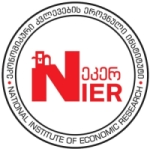Formation of agrarian component of Ukrainian commodity exports
Abstract
Introduction. The active movement of Ukraine towards integration into the world economy, the liberalization of customs regimes, the expansion of sales markets and the introduction of innovations have created new prospects for the progress of the production of exports-oriented agricultural products. Foreign economic activity plays a significant role in the economy of the country, affects its internal dynamics and competitiveness, so the research of trends in the formation of commodity exports are of current importance.
Aim and tasks. The aim of the article is to research the dynamics of progress and the current state of the agricultural sector of the economy of Ukraine in the field of crop production, the contribution to it of the main categories of farms and the role of the agricultural sector in the formation of the exports potential of the country. For the solvation of this problem, a number of statistical materials, scientific publications and Internet resources on the indicators of production activities of agricultural enterprises were used, the methods of mathematical statistics and economic and mathematical modeling were applied.
Results. The conducted researches allowed to evaluate the contribution of the main categories of farms to crop production in 2010-2017. To estimate the distribution of land between agricultural enterprises the Lorenz curve was constructed, the Gini coefficient and the Hoover index were calculated. Calculations showed that 81.5% of enterprises had 13.4% of the total land area, and in order to achieve an equal distribution of land between enterprises, it is necessary to redistribute 68% of the land areas. It has been established that in the agricultural sector of Ukraine there is a polarization in the production of agricultural products – small-scale forms of management dominate in the production of labor-intensive and low-income goods, while products of powerful agricultural enterprises have a high yield and low labor intensity. One of the leading places in crop production is the cultivation of sunflower due to its high profitability. Linear and multiplicative regression models of dependence of the volume of sunflower production. It was determined that high levels in the structure of commodity exports of Ukraine belong to sunflower oil, wheat, corn, barley, rapeseed and soybeans, and it was noted the important role of agricultural holdings in forming the exports potential.
Conclusions. Agricultural enterprises, in particular, holdings, which have more opportunities than households for increasing their production through the introduction of innovations and the scale of production play a growing role in the production of agricultural products . Ukraine makes a significant contribution to global food security, but its position in the world markets as a producer and supplier of raw materials is fixed. Exports of goods with a low level of added value largely depend on fluctuations in world prices, which contributes to the sensitivity of the domestic economy to external negative trends, therefore, Ukrainian commodity exports need to diversify and increase the share of high technological value added goods.
Keywords:
agribusiness, agroholdings, crop production, innovation, exports, econometric modelReferences
2. Kolesnyk, T., Samborska, O., Talavyria, M., & Nikolenko, L (2018). Ensuring the sustainable development of the Ukrainian agrarian sector in conditions of globalization. Problems and Perspectives in Management, 16(3), 245-258. DOI: 10.21511/ppm.16(3).2018.20/ July 2018.
3. Vasylieva, N., & Pugach, A. (2017). Economic assessment of technical maintenance in grain production of Ukrainian agriculture. Bulgarian Journal of Agricultural Science, 23(2), 198-203.
4. Karamushka, О. M., & Moroz, S. I. (2018). Analysis of the production of grains and oilseeds culture in ukraine. Efektyvna ekonomika, 10. DOI: http://10.32702/2307-2105-2018.10.41.
5. Khodakivska, O. V., & Mohylnyi, O. M. (2017). Agroholdings of Ukraine: agrarian policy and future challenges. Economika APK, 6, 33–41 [in Ukrainian].
6. Andriichuk, V. H. (2013). New types of agroindustrial formations within the framework of the national agrarian development strategy. Economika APK, 1, 3–15 [in Ukrainian].
7. Andriichuk, V. H., & Sas, I. S. (2017). Criteria for distribution of agrarian enterprises by size and differentiation of the state support level for agribusiness. Economika APK, 10, 13–24 [in Ukrainian].
8. Gyrnyk, L. V. (2016). Agroholdings activity in Ukraine and their impact on the development of agriculture. Visnyk Shidnojevropejs'kogo universytetu ekonomiky i menedzhmentu, 20(1), 35–43 [in Ukrainian].
9. Kutsenko, І. (2018). Influence of integration on development of subjects of the agrarian sector of economy. Agricultural and Resource Economics: International Scientific E-Journal, 4(3), 86–103.
10. Dankevych, Y. (2018). Agricultural development strategy in the context of inter-sectoral integration: economic and environmental vectors. Agricultural and Resource Economics: International Scientific E-Journal, 4(3), 55–70.
11. Samarets, N. M. (2016). The current state of activity of rural households in Ukraine. News of Dnipropetrovsk State Agrarian and Economic University, 39(1), 83–88 [in Ukrainian].
12. Kononenko, O. M. (2018). European practices of supporting the sustainable rural development in terms of land relations improving. Economika APK, 4, 95–105 [in Ukrainian].
13. Malik, M. Y., & Shpykuliak, O. H. (2018). Trends and perspectives of development of personal peasant households. Economika APK, 1, 11–19 [in Ukrainian].
14. Levesque, R., Khodakivska, O. V., & Yurchenko, I. V. (2017). Models for regulating the market turnover of agricultural land in the European Union. Economika APK, 10, 5–12 [in Ukrainian].
15. Zinchuk, T. O., & Dankevych, V. Ye. (2016). European experience of agricultural land market formation. Ekonomika APK, 12, 84–92 [in Ukrainian].
16. Dovgal, O. V., Kravchenko, M. V., Demchuk, N. I., Odnoshevnaya, O. A., Novikov, O. Y., Andrusiv, U. Y., Lesik, I. M., & Popadynets, I. R. (2017). Methods of competitiveness assessment of agricultural enterprise in Eastern Europe. Regional Science Inquiry, IX(2), 231-242. Retrieved from https://ideas.repec.org/a/hrs/journl/vixy2017i2p231-242.html.
17. Samarets, N. M. (2017). Econometric modeling in the agrarian market of vegetable production. News of Dnipropetrovsk State Agrarian and Economic University, 44(2), 103–108 [in Ukrainian].
18. Nuzhna, S. A. (2016). Mathematical aspects of agricultural enterprises design and planning under uncertainty. News of Dnipropetrovsk State Agrarian and Economic University, 41(3), 128–133 [in Ukrainian].
19. Nuzhna, S., & Samarets, N. (2018). Optimization of use of manufacturing resources by enterprises of the agricultural sector. Ekonomichnyy analiz, 28(4), 225-234 [in Ukrainian].
20. Samarets, N. M. (2018). Dynamics and regression analysis of the agrarian food market. Efektyvna ekonomika, 10. DOI: http://10.32702/2307-2105-2018.10.36.
21. Bessler, D. A., Doefman, J. H., Holt, M. T., & LaFrance, J. T. (2010). Econometric Developments in Agricultural and Resource Economics: The First 100 Years. American Journal of Agricultural Economics, 92(2), 571-589.
22. Vasylieva, N. K. (2016). Cluster models of households’ agrarian production development. Economic Annals-XXI, 158 (3-4 (2)), 13–16. DOI: http://dx.doi.org/10.21003/ea.V158-03.
23. Karamushka О., Moroz S., & Vasylieva N. (2018). Information component of innovative support for agricultural enterprises capital. Baltic Journal of Economic Studies, 4, 4, 145-151.
24. FAOSTAT (2018). FAOSTAT Database. Retrieved from: http://www.fao.org/faostat.
25. State Statistics Service of Ukraine (2018). Agriculture of Ukraine. Retrieved from: http://www.ukrstat.gov.ua.
26. Ukrainian Agribusiness Club (2018a). LFM book. Retrieved from: http://ucab.ua.
27. Ukrainian Agribusiness Club (2018b). Agroholdings cultivate one-third of the land of all agricultural enterprises. Retrieved from: http://ucab.ua
28. FAO (2017). The State of Food and Agriculture. Leveraging food systems for inclusive rural transformation. http://www.fao.org/3/a-I7658e.pdf.
29. Latifundist.com (2018). Top 100 latifundists of Ukraine 2018. Retrieved from: https://latifundist.com/rating/top100#226.
30. World’s Top Exports (2019). Products. Official site. Retrieved from: http://www.worldstopexports.com.
31. State Fiscal Service of Ukraine (2019). Customs statistics. Official site. Retrieved from: http://sfs.gov.ua/ms/f11.
32. The World Bank (2018). World Bank Open Data. Retrieved from: https://data.worldbank.org.
33. Honcharenko, I., Kozachenko, L., & Moroz, T. (2018). Informational support of the rural areas’ development. Baltic Journal of Economic Studies, 4(4), 93–99. DOI: 10.30525/2256-0742/2018-4-4-93-99.

This work is licensed under a Creative Commons Attribution-NonCommercial 4.0 International License.
If the article is accepted for publication in the journal «Economics. Ecology. Socium» the author must sign an agreementon transfer of copyright. The agreement is sent to the postal (original) or e-mail address (scanned copy) of the journal editions.






















